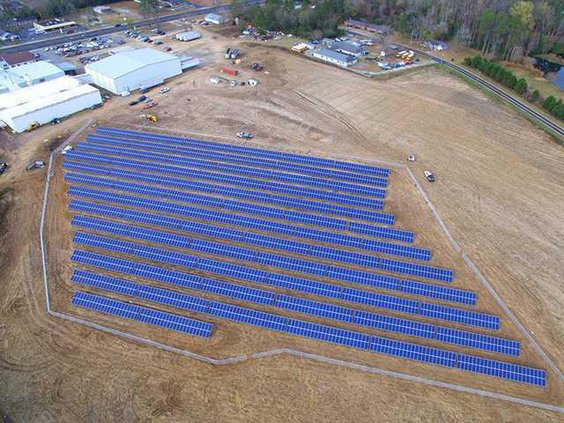Mascot Pecan Shelling Co. in Glennville recently had Coastal Solar, based in Hinesville, install a solar array system, an investment of more than $2.5 million that is projected to pay for itself in power savings and incentives in four to seven years.
Mascot Pecan hired the solar installation company that specializes in agricultural projects to erect 3,400 solar panels, each rated 320 watts, on six acres adjacent to the processing plant.
For the shelling company, the energy required to shell, cool and freeze its pecans was increasing each year, topping out at more than 2.2 million kilowatt hours and a $260,000 power bill last year, according to a news release from Coastal Solar. Federal solar tax incentives should help Mascot recover its initial investment within seven years, and if the company’s owners, brothers Kenny and Tim Tarver, are awarded a Rural Energy for America Program, or REAP, grant they have applied for from the U.S. Department of Agricultural, the investment recovery time will shrink to less than four years, the installation company announced.
“When you put all these together, it was an easy decision,” Kenny Tarver said.
The brothers bought Mascot Pecan in 1991 from their parents, Mills and Juliet Tarver, who founded it in 1955 as a roadside tourist shop and gas station on U.S. Highway 301. The roadside station closed in the late 1960s, but the company continued to grow in pecan processing and making and marketing candy and nut products.
A million watts
With the 1.088-megawatt solar array, Mascot expects to save over $200,000 every year.
Each of the 25 rows of panels is 450 feet long. Panels are fixed at 25-degree angles and face south, “the ideal orientation for solar panels to receive maximum sunlight year round,” Coastal Solar said in its announcement. The array is designed to produce more than 70 percent of the energy the plant needs, amounting to about 1.7 million kilowatt-hours per year.
The Tarvers decided on a ground installation rather than a roof-based one because of the size of their array, and the available land.
They used several federal solar tax incentives, including an investment tax credit, which will provide a 30 percent rebate of the project costs. They also qualified for accelerated depreciation and a bonus depreciation, which stretch over the first five years. Combined, these incentives cover more than 100 percent of the costs, Coastal Solar’s announcement said.
If Mascot also qualifies for the REAP grant, the system should be paid for in four years and last at least 20 beyond that, according to Coastal Solar.
Future generations
“We’re thinking about future generations,” Tarver said.
Coastal Solar, which also has South Carolina and Alabama locations, has been marketing farm and agribusiness applications of solar power widely in Georgia and informing business owners of the federal incentives available. Some other installations in the immediate area power poultry houses, where roof-mounted arrays are often used.

